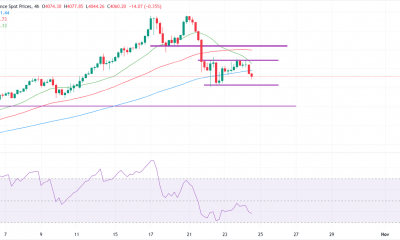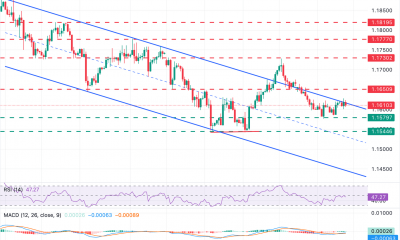

others
Mexican Peso on the defensive amid strong US Dollar – Crypto News
- Mexican Peso weakens, USD/MXN rises 0.36%, as markets anticipate Fed policy decision.
- Lowered expectations for Fed rate cut, Middle East tensions drive Peso down, Dollar up.
- Investors focus on Jerome Powell’s speech for clues on Fed’s future monetary policy direction.
The Mexican Peso (MXN) begins this week on the back foot for the third consecutive week against the US Dollar (USD) as traders remain cautious ahead of the US Federal Reserve’s (Fed) monetary policy decision. Investors reducing bets the Fed will cut rates in March, along with geopolitical tensions in the Middle East, keep risk-perceived currencies weak, boosting the safe-haven status of the Greenback. Therefore, the USD/MXN exchanges hands at 17.21, up 0.36%.
USD/MXN traders are bracing for the Fed’s decision on Wednesday. Expectations suggest the US central bank will keep rates on hold, and according to recent statements by some policymakers, discussions about quantitative tightening (QT) could emerge at the next meeting. However, market participants are looking to Fed Chairman Jerome Powell’s first appearance of the year on the stand. In December, Powell shifted more dovish, which was followed by Fed officials pushing back against aggressive speculation that the Fed would ease policy aggressively. Traders estimate that Powell will take a more balanced approach on Wednesday.
Daily Digest Market Movers: Mexican Peso to extend its weekly losses, ahead of Fed decision
- Ahead in the week, Mexico’s economic docket will reveal the Gross Domestic Product (GDP) preliminary reading for 2023’s last quarter, with estimates on a quarterly basis down at 0.3% from 1.1% in Q3. The consensus projects yearly figures down from 3.3% at 3%.
- The Mexican Peso could remain bullish as data suggests inflation remains above target even though underlying numbers slipped below the 5% threshold for the first time. That, along with the latest strong labor market report, indicates economic strength. With risks for inflation remaining tilted to the upside, that could prevent the Bank of Mexico (Banxico) from cutting rates.
- On the bearish front, two of Banxico’s Governors, one involving Governor Victoria Rodriguez Ceja, opened the door to ease policy in the first quarter of 2024, which could weigh on the Peso as the interest rate differential between Mexico and the US would shrink. The economy losing pace due to an upcoming slowdown in the US and geopolitical risks are a headwind for the Mexican currency.
- Last week’s data featured Mexico’s Trade Balance hitting a surplus in December, while Economic Activity shrank in November. On the data front, the Unemployment Rate dropped, signaling the labor market remains robust.
- On January 5, a Reuters poll suggested the Mexican Peso could weaken 5.4% to 18.00 per US Dollar in the 12 months following December.
- Across the border, the US economy remains resilient, as GDP in Q4 of last year crushed forecasts despite easing from Q3’s 4.9%. That could force Fed officials to refrain from easing policy, but the latest inflation data suggests they’re close to getting inflation to its 2% target.
- Nevertheless, mixed readings in other data suggest that risks have become more balanced. That is reflected by investors speculating that the Fed will cut rates by 139 basis points during 2024, according to the Chicago Board of Trade (CBOT) data.
Technical Analysis: Mexican Peso drops sharply as USD/MXN bounces off 50-day SMA
The USD/MXN price action on Monday has edged to the upside sharply with the risks of taking the bears out of the picture. A bullish engulfing chart pattern on the daily chart is putting the 200-day Simple Moving Average (SMA) at 17.34 back into play. Once that level is taken out, the 100-day SMA at 17.41 would be up next, followed by the December 9 high at 17.56, ahead of the May 23 high from last year at 17.99.
Conversely, if sellers step In, they must drag the USD/MXN exchange rate toward the 50-day SMA at 17.13. A decisive break will expose the January 22 low at 17.05, followed by the 17.00 psychological level.
USD/MXN Price Action – Daily Chart
Central banks FAQs
Central Banks have a key mandate which is making sure that there is price stability in a country or region. Economies are constantly facing inflation or deflation when prices for certain goods and services are fluctuating. Constant rising prices for the same goods means inflation, constant lowered prices for the same goods means deflation. It is the task of the central bank to keep the demand in line by tweaking its policy rate. For the biggest central banks like the US Federal Reserve (Fed), the European Central Bank (ECB) or the Bank of England (BoE), the mandate is to keep inflation close to 2%.
A central bank has one important tool at its disposal to get inflation higher or lower, and that is by tweaking its benchmark policy rate, commonly known as interest rate. On pre-communicated moments, the central bank will issue a statement with its policy rate and provide additional reasoning on why it is either remaining or changing (cutting or hiking) it. Local banks will adjust their savings and lending rates accordingly, which in turn will make it either harder or easier for people to earn on their savings or for companies to take out loans and make investments in their businesses. When the central bank hikes interest rates substantially, this is called monetary tightening. When it is cutting its benchmark rate, it is called monetary easing.
A central bank is often politically independent. Members of the central bank policy board are passing through a series of panels and hearings before being appointed to a policy board seat. Each member in that board often has a certain conviction on how the central bank should control inflation and the subsequent monetary policy. Members that want a very loose monetary policy, with low rates and cheap lending, to boost the economy substantially while being content to see inflation slightly above 2%, are called ‘doves’. Members that rather want to see higher rates to reward savings and want to keep a lit on inflation at all time are called ‘hawks’ and will not rest until inflation is at or just below 2%.
Normally, there is a chairman or president who leads each meeting, needs to create a consensus between the hawks or doves and has his or her final say when it would come down to a vote split to avoid a 50-50 tie on whether the current policy should be adjusted. The chairman will deliver speeches which often can be followed live, where the current monetary stance and outlook is being communicated. A central bank will try to push forward its monetary policy without triggering violent swings in rates, equities, or its currency. All members of the central bank will channel their stance toward the markets in advance of a policy meeting event. A few days before a policy meeting takes place until the new policy has been communicated, members are forbidden to talk publicly. This is called the blackout period.
-

 Cryptocurrency1 week ago
Cryptocurrency1 week agoStripe’s stablecoin biz seeks national bank trust charter – Crypto News
-

 Technology1 week ago
Technology1 week agoApple launches MacBook Pro 14-inch with M5 chip in India, price starts at ₹1,69,900 – Crypto News
-

 Metaverse1 week ago
Metaverse1 week agoTech is valued as if AI is the next smartphone. It isn’t. – Crypto News
-

 Cryptocurrency1 week ago
Cryptocurrency1 week agoBitcoin, Ethereum rebound following ‘largest single-day wipeout in crypto history’ – Crypto News
-

 Technology5 days ago
Technology5 days agoChatGPT remains the most popular chatbot globally but Google’s Gemini is catching up fast – Crypto News
-
Business1 week ago
Pro Says Ethereum Price is a Buy Despite Rising Liquidations and BlackRock Selling – Crypto News
-
Business1 week ago
Pro Says Ethereum Price is a Buy Despite Rising Liquidations and BlackRock Selling – Crypto News
-

 Metaverse1 week ago
Metaverse1 week agoWalmart teams with OpenAI for ChatGPT purchases. The retailer is ‘ahead of the curve’. – Crypto News
-
Business1 week ago
Nasdaq-Listed Webus Adopts XRP in New Tokenized Reward Platform, Eyes $20B Loyalty Market – Crypto News
-
Business1 week ago
Dogecoin Gets Major Utility Boost as Trump-Linked Thumzup Prepares DOGE Payments – Crypto News
-
others4 days ago
‘Floki Is The CEO’: FLOKI Surges Over 20% After Elon Musk’s Name Drop – Crypto News
-
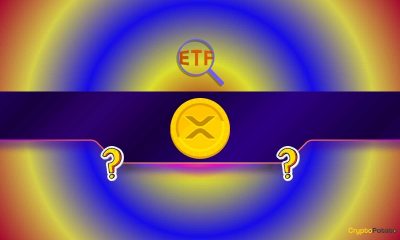
 Cryptocurrency1 week ago
Cryptocurrency1 week agoWhy Are These Ripple (XRP) ETF Filings the Worst Idea Ever? Analyst Explains – Crypto News
-
Business1 week ago
Fed’s Stephen Miran Calls for Rapid Rate Cuts Amid U.S.-China Trade Tensions – Crypto News
-

 Cryptocurrency7 days ago
Cryptocurrency7 days agoIs Wave 5 Still Coming or a New Bull Trend Emerging? – Crypto News
-
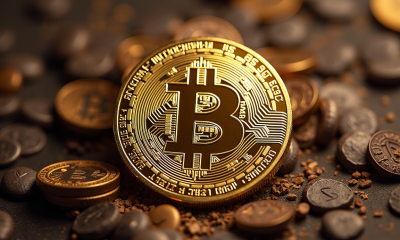
 Cryptocurrency1 week ago
Cryptocurrency1 week agoBeyond Bitcoin: How Asia’s new crypto playbook is breaking from the west – Crypto News
-
Technology1 week ago
XRP News: Ripple Strikes Deal with Absa, Expanding Custody Footprint To Africa – Crypto News
-
Business1 week ago
Pi Coin Price Gears for Recovery as DEX and AMM Launch Revives Utility Hopes – Crypto News
-
others1 week ago
Cardano’s Charles Hoskinson Addresses Allegations of Diverting Treasury Funds – Crypto News
-

 others4 days ago
others4 days agoRisk-off sentiment drives selective equity positioning – BNY – Crypto News
-

 Metaverse1 week ago
Metaverse1 week ago‘Erotica for verified adults’: OpenAI to allow mature content on ChatGPT; Sam Altman vows to treat adults like adults – Crypto News
-

 Cryptocurrency1 week ago
Cryptocurrency1 week agoCelestia price reclaims $1 after crash to $0.27: TIA forecast – Crypto News
-

 Metaverse1 week ago
Metaverse1 week agoMint Explainer | Why Big Tech is rushing to build AI data centres across India – Crypto News
-

 Metaverse1 week ago
Metaverse1 week agoChatGPT ‘adult model’ plan: OpenAI’s Sam Altman reacts to criticism, says ‘not elected moral police’ – Crypto News
-

 Blockchain1 week ago
Blockchain1 week agoVisa Says Stablecoins Are Powering ‘a New Lending Space’ – Crypto News
-
Business1 week ago
Building Through the Downturn – Why Smart Money Is Watching XYZVerse – Crypto News
-
Business1 week ago
Gold vs Bitcoin – Peter Schiff Declares BTC Has Failed as Digital Gold, CZ Reacts – Crypto News
-

 Blockchain1 week ago
Blockchain1 week agoGhana Moves Toward Crypto Regulation Amid Rising User Adoption – Crypto News
-

 Cryptocurrency1 week ago
Cryptocurrency1 week agoCrypto markets turn red after Trump threatens to halt cooking oil imports from China – Crypto News
-
others6 days ago
Shiba Inu Price Eyes Recovery as Burn Rate Jumps 10,785% – Can SHIB Hit $0.000016? – Crypto News
-

 Blockchain5 days ago
Blockchain5 days agoTrump Confirms Meeting With Xi Jinping on Oct 31, Markets Rally in Response – Crypto News
-

 others4 days ago
others4 days agoAUD/USD rises on US-China trade hopes, Fed rate cut outlook – Crypto News
-

 Technology4 days ago
Technology4 days agoAmazon Web Services outage: Here’s how many users are impacted and the downtime costs – Crypto News
-
others4 days ago
Ethereum Price Targets $8K Amid John Bollinger’s ‘W’ Bottom Signal and VanEck Staked ETF Filing – Crypto News
-

 others1 week ago
others1 week agoEUR/GBP weakens to near 0.8700, French government plans to postpone pension reforms – Crypto News
-

 Cryptocurrency1 week ago
Cryptocurrency1 week agoCoinbase Plans to List Surging BNB After Previously Delisting Binance Stablecoin – Crypto News
-
![Nifty 50 Index Elliott Wave technical analysis [Video]](https://dripp.zone/news/wp-content/uploads/2025/05/Nifty-50-Index-Elliott-Wave-technical-analysis-Video-Crypto-400x240.jpg)
![Nifty 50 Index Elliott Wave technical analysis [Video]](https://dripp.zone/news/wp-content/uploads/2025/05/Nifty-50-Index-Elliott-Wave-technical-analysis-Video-Crypto-80x80.jpg) others1 week ago
others1 week agoDow Jones holds onto recovery levels as investors focus on earnings – Crypto News
-

 De-fi1 week ago
De-fi1 week agoCrypto Market Slides for Second Day as Bitcoin Dips Amid Geopolitical Tensions – Crypto News
-

 De-fi1 week ago
De-fi1 week agoLighter Distributes Points to Users Affected by Platform Outage – Crypto News
-

 De-fi1 week ago
De-fi1 week agoSony Enters U.S. Crypto Banking Race Amid Growing Institutional Interest – Crypto News
-

 Metaverse1 week ago
Metaverse1 week agoAll About AI Tech4Good Awards are back for the second edition. Apply Now! – Crypto News
-

 others1 week ago
others1 week agoUSD/JPY strengthens as Trump’s softer stance on China boosts US Dollar demand – Crypto News
-
others6 days ago
Stripe-backed Tempo Hires Ethereum Researcher Dankrad Feist After $500M Funding – Crypto News
-

 others6 days ago
others6 days agoGold crashes 2% from record high as Trump tempers threats on China – Crypto News
-
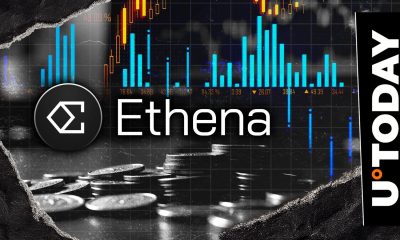
 Cryptocurrency6 days ago
Cryptocurrency6 days agoEthena (ENA) Price Outperforming: Only Reason – Crypto News
-
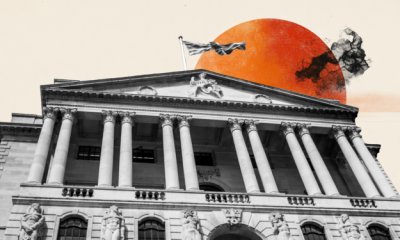
 others6 days ago
others6 days agoWe should not cut rates every quarter, but rate-cutting cycle not over – Crypto News
-

 Cryptocurrency5 days ago
Cryptocurrency5 days agoAster price tanks 20% as sell-off pressure hits altcoins – Crypto News
-
Business4 days ago
How Will “Unusual” US CPI Inflation Data Release Could Impact Fed Rate Cut, Crypto Market? – Crypto News
-

 Technology4 days ago
Technology4 days agoAWS says it has fixed the problem that crippled half the internet but many popular apps are still down – Crypto News
-
Business4 days ago
Binance Founder CZ Predicts Bitcoin Will Flip Gold’s $30 Trillion Market – Crypto News
-
Business3 days ago
Solana Price Eyes $240 Recovery as Gemini Launches SOL-Reward Credit Card – Crypto News

